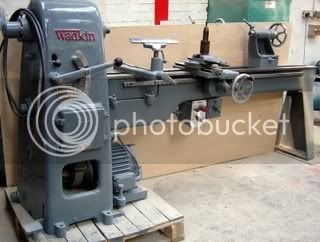Hello
I am looking to buy a small woodworking lathe, and need some advise.
It is for making bagpipe chanters-drones, so doesn't need have a large working area approx 14inches max lenght, and must be able to bore a hole through the centre of a 10inch peice.
Any advice of what is available, and any reccomendations
Gerard
I am looking to buy a small woodworking lathe, and need some advise.
It is for making bagpipe chanters-drones, so doesn't need have a large working area approx 14inches max lenght, and must be able to bore a hole through the centre of a 10inch peice.
Any advice of what is available, and any reccomendations
Gerard


































